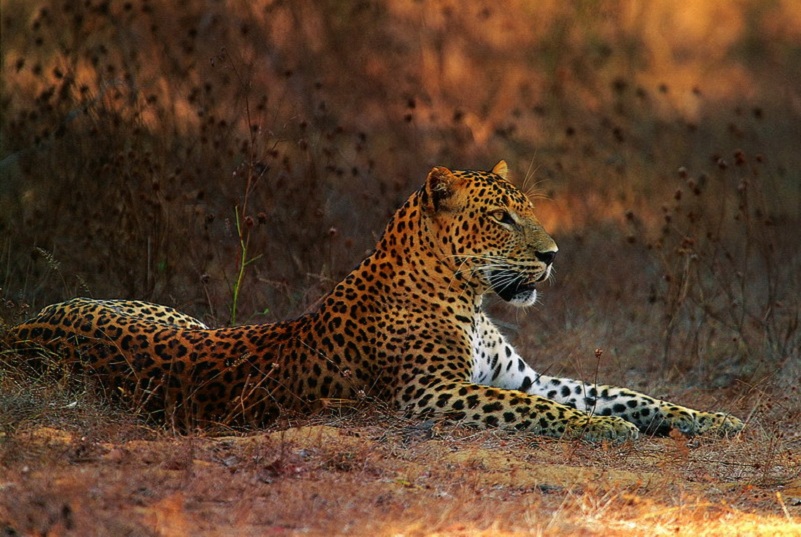Wilpattu National Park is the oldest and largest of its kind in Sri Lanka. Regular visitors of this park believe that at any time of the day, there is assurance of a leopard being visible. A few years ago, for the convenience of visitors, a new entrance was opened at the park from the Puttalam-Mannar road (32kms from Puttalam). Jeep safaris are available at the entrance so you can get yourself a comfortable and adventurous ride to explore the Wilpattu National Park.
In 1905, the area was declared a wildlife sanctuary and then in 1938, it was upgraded to national park status. This massive park is 131,693 hectares in size, consisting of about sixty lakes and tanks scattered around the park. During the civil war in Sri Lanka, the park was closed to visitors and was re-opened only in 2010.Seven circuit bungalows are built at Wilpattu National Park but only four of them are currently in operation. Four campsites are available here in which Blue Lanka Tours can arrange an exciting camping experience for you to further explore the landscapes, flora and fauna of this popular national park.
WILLUS
Willus, Sinhalese name for natural lakes, are a highlight of this park, from which it gets its name – Wilpattu. About sixty naturally formed, sand rimmed water basins are found in several parts of the park, in which rainwater gets filled. These Willus play a major role in supporting resident and migratory water fowl such as huge breeding populations of the Painted Stork and Open Billed Stork. Several reptile species also permanently reside in these Willus.
FLORA
The west of the park contains dense forestation which includes the following types of vegetation:
- Littoral vegetation such as salt grass and low scrubs
- Monsoon forest species like Palu and Manilkara
- Satin (Chloroxylon)
- Milla (Vitex)
- Weera (Drypetes)
- Ebony (Disopyros)
- Wewarna (Alseodaphne)
FAUNA
At the Wilpattu National Park, the fauna variety shows that mammalian diversity and ecological densities are very high. 31 different mammal species have been spotted here, as well as those threatened with extinction. The threatened species living here are the elephants, sloth bear, leopards and water buffalo. Among the reptiles, the most common ones are the monitor, mugger crocodile, common cobra, rat snake, Indian python, pond turtle and the soft shelled turtle.

